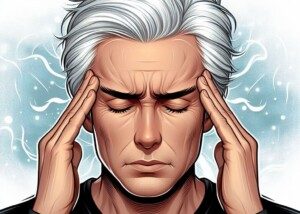
The number of people who have a transient ischemic attack every year is huge.
In Expert Review of Neurotherapeutics, three neurologists report that as many has 500,000 people in the United States every year experience a transient ischemic attack (TIA).
Another name for a TIA is a mini-stroke. A TIA is a harbinger or forerunner of a near-future massive stroke. A transient ischemic attack is a medical emergency.
What about incidence in the United Kingdom?
“This is not definitely known,” says Dr. David Beatty, MD, a UK-based retired general practitioner with 30+ years of experience and an instructor of general medicine for 20 years.
“Many people will recover quickly and never seek medical help.”
This phenomenon is true anywhere, actually, since many people won’t even think, “Is this a TIA?” upon onset of the symptoms.
Many will just brush it off as stress, a side effect of a medication or a normal part of aging.
“Those who do see a doctor may not get a correct diagnosis,” continues Dr. Beatty.
“This is because a TIA may present in various ways.
“The classical case will have had clear limb weakness and perhaps a droopy mouth on one side of the face and speech difficulty.
“Many presentations, however, will be more vague.
“There might be dizziness, brief visual disturbance or an episode of confusion.
“Even if a patient goes to hospital they may have had a TIA — but all the tests can turn out normal.
“The estimated prevalence for a first TIA is 50 per 100,000 people per year,” says Dr. Beatty.
“There is a lot of guesswork involved in reaching this figure.”
Disastrous Fallout of a Transient Ischemic Attack

“After having a TIA there is a 12% chance of getting a stroke in the following year and a 7% chance each year after that,” says Dr. Beatty.
“The UK prevalence for a first stroke is 230 per 100,000 per year.
“There are about 80,000 hospital admissions due to stroke each year.
“Stroke is the biggest cause of adult disability.” This is true in the U.S. as well.
“The risk of a further stroke within the next five years is 26%.”
Stroke Around the Corner
In the U.S., the ERN report says that 10 to 15% of known TIA patients suffer a full-blown stroke within 90 days.
Out of these strokes, 40 percent will strike within 24 hours of the original transient ischemic attack.
The difference between a TIA and actual stroke is duration.
The causation and symptoms are the same, though in the TIA, the symptoms are temporary (transient).
A blood clot obstructs a vessel in the brain, blocking oxygen to the portion of the brain that the vessel feeds.
A transient ischemic attack is a medical emergency, even if the symptoms last only 30 seconds.

 Dr. Beatty has worked in primary medicine, surgery, accident and emergency, OBGYN, pediatrics and chronic disease management. He is the Doctor of Medicine for
Dr. Beatty has worked in primary medicine, surgery, accident and emergency, OBGYN, pediatrics and chronic disease management. He is the Doctor of Medicine for 











